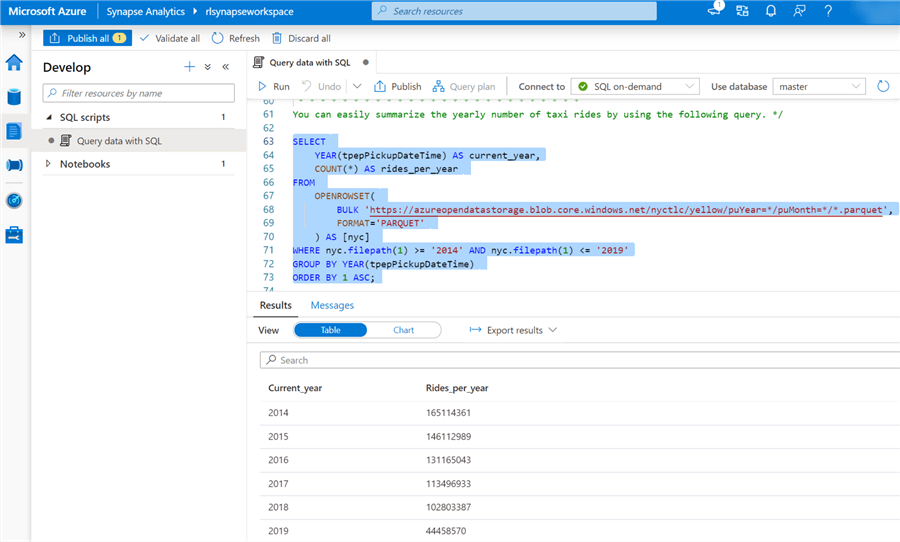

In this table structure, we have intentionally added city names in the countryįield to simulate data discrepancy, which is one of the use-cases used by analysts to filter out such data. The SELECT command as shown below, we will have the data ready to be used with various filter operators andįunctions supported by postgresql. Once we insert a few records and then select the same using So, we need to specify the schemaĪs well while inserting data using the insert command.
#Azure data studio filter tables serial#
One thing we need to keep in view is that the ID field is of the SERIAL datatype, which means that it willĪuto-increment and we cannot dictate its values in the query while inserting data. This can be easily done using the INSERTĬommand. Once the table is created, we need to populate records or values in it. In this table structure, the id field isĪuto-increment and the rest of the fields can be provided as desired. Table with a few fields as shown below using the CREATE TABLE command. To query and filter data, we need to have at least one database object with some data in it. This will open the query window from where we will be executing SQL queries. Select the tables object category, right-click on it and select the Query PgAdmin utility would look as shown below. Once the database instance as well as editor is in place with successful connectivity, the database objects in the One can use any editor of choice that works with postgres. Once the instance is in place, we will be using the pgAdmin It is assumed the one has required access to Azure Database for PostgreSQL service and an instance of Postgres – Single Server edition or any other edition supported by this service has already been created. To perform the exercise shown below where we would be looking at different operators in PostgreSQL that filters data, the first thing we need in place is an instance of postgres. Let’s go ahead and learn some of the most fundamental ways to filter data hosted in PostgreSQL. Like every other relational database, Postgres offers different operators and options to filter data while querying. This translates to filtering the data while querying it. It goes without saying that when the data is consumed, it must be scoped based on the requirements or criteria specified by the consumer. One of the most fundamental operations performed on the database is reading and writing data to consume and host data. This database is offered on the Azure cloud platform through a service named Azure Database for PostgreSQL. Out of tens of commercial and open-source relational databases, one of the most popular open-source relational databases is PostgreSQL. In the this article, we will go over some of the most fundamental ways to filter data hosted in PostgreSQL.ĭata is hosted in a variety of data repositories, one of which is relational databases. If the pop-up says Replace in Settings, don't click it! Go to the USER SETTINGS column to the right and locate the section and advance to the next step. If there is no in the USER SETTINGS section, hover over the text in the DEFAULT SETTINGS column and click the gear icon that appears to the left of the text and click Copy as Setting JSON. To customize the settings, you need to edit the entry in the USER SETTINGS section. Type dashboard in Settings Search input box and locate. Type settings in the search box and select Preferences: Open User Settings. Open User Settings by pressing Ctrl+Shift+P to open the Command Palette. Turn on a management insight on Azure Data Studio's database dashboardĪzure Data Studio has a built-in sample widget to monitor the space used by tables in a database. Connect and query Azure SQL Database using Azure Data Studio.Connect and query SQL Server using Azure Data Studio.To create the TutorialDB database, complete one of the following quickstarts: This tutorial requires the SQL Server or Azure SQL Database TutorialDB. Filter data and view label detail on an insight chart.Quickly turn on an insight widget using a built-in insight widget example.


 0 kommentar(er)
0 kommentar(er)
